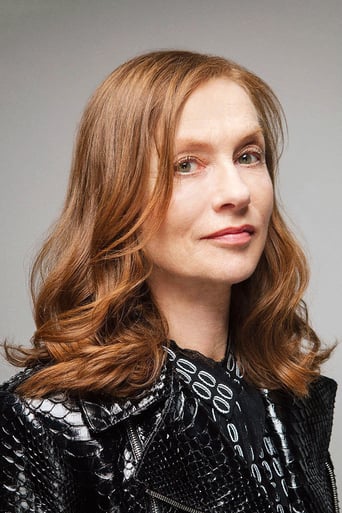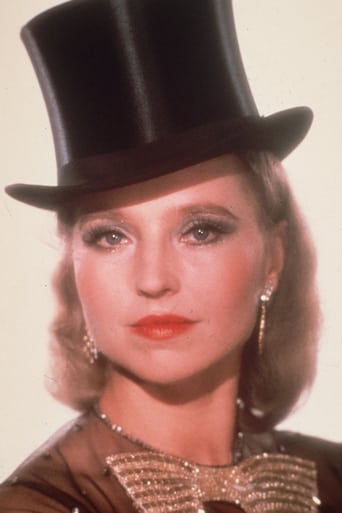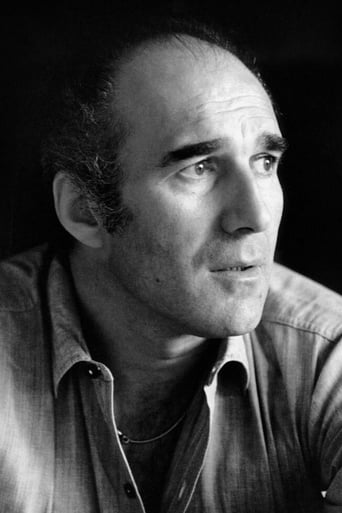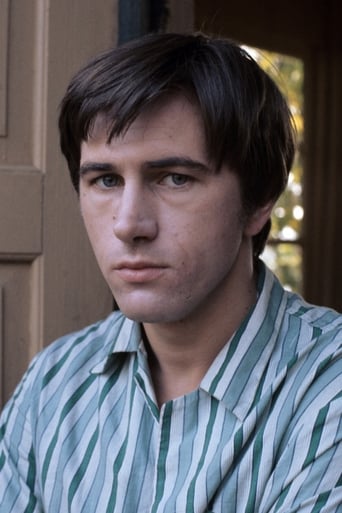osmangokturk
Another film of Godard about film making, specifically should a film has a story or not. Godard uses a lot of elements from the class conflicts jargon. This is referred in the movie as well by the dialogue " any film has been cast in a factory?"Running a factory has difficulties and problems as making a film in set. However all of these lives are intrigued. The main actress the lower of the factory owner, is waiting material gains but is being deceived like every worker in the factory. The factory owner is always coughing, which shows the general ill manner of the business environment. Movie director decides to forget his ex-wife, and she eventually understand the lies of the owner. Movie director refuses to sell his movie to the Americans, the capitalists, the rebellious girl in the factory do not subdue to be fired.the playing girl, the lamb in the movie set, the child are all the elements that indicate the innocence
Slime-3
Very little in this film can honestly be said to grab the attention for long, unless perhaps, you are a Godard completest. An art historian might appreciate the messages hidden within the old master painting being turned into a movie by the director at the centre of the piece. For the rest of us it's hard to follow threads of the various partially connected stories in which largely unappealing characters bicker, berate and bed one another. Jerzy a Polish movie director, has literally 'lost the light' in his big budget production. His efforts are hamstrung by news of Solidarity's emergent uprising in his native land, the financial demands of his producers and his involvement with two women : the owner of the hotel in which most of his film company lodge, and a dowdy sacked worker at her husbands factory. That's pretty well it. There's not much more. The images of the old masters Jerzy is attempting to turn into a film, although he seems to have little concept of exactly how, are nicely lit but the films exteriors around the promising location of Lake Geneva are drab, the interiors even worse and despite some big names among the cast there is little charisma in evidence. I've watched it twice and sadly 'Passion', an oddly inappropriate title in itself, made no more impression on the second viewing. The Godard of 'Pierrot Le Fou' (a film I loved) seems a long way from the Godard of 'Passion'. Other reviewers have clearly found a meaning and beauty that I have missed. But hey! If it floats your boat then thats good.
Chris_Docker
Have you ever watched a movie and been aware of how much your emotions are being manipulated? Your buttons being pushed?Just before I watched this film, I'd seen neuroscientist Susan Greenfield say how modern media encourages a sequence she calls arousal-addiction-reward. And stimulating that mental pathway releases dopamine, which inhibits the part of the brain associated evaluating social behaviour, planning complex cognitive behaviour, personality expression, and decision making. Most films are designed to produce emotional response. We are aroused (for instance) by the plight of the leading lady, addicted to the drama long enough to see what happens, and then suitably rewarded when she marries and lives happily ever after. Not only have we been told what to feel, but our critical thinking is subjugated into passive viewing. Unbiased appraisal of hypothetical outcomes is largely overridden by dominant subtexts. Critical thinking off: mainstream message on.Godard claims he makes films to invite audiences to think, not to feel. The complex concept and metaphor (rather than adrenalin-filled) stories, can at first seem boring. Lacking in formal narrative, they flop at the box office, yet go on to critical acclaim and canonical status. Passion examines this discrepancy between a film as a piece of art versus the demands of commercial cinema.Passion is a film within a film. Jerzy, a Polish filmmaker in western Europe, is re-creating tableaux vivants - masterpieces by Goya, Rembrandt, El Greco, Ingres and Delacroix. Tableaux vivants were a popular 19th century pre-cinema entertainment (described, for instance, in Sontag's novel, The Volcano Lover). Actors don't speak or move, and Jerzy is obsessing over light and shade while making up scenarios on the fly. His aesthetically ambitious film is two billion francs over budget. Money is needed. Meanwhile backers harangue Jerzy over his lack of storyline.The filmmakers occasionally go to a nearby hotel and factory to find extras. Jerzy seduces both the factory owner's wife and a worker, Isabelle (Isabelle Huppert), who has been laid off and wants her money. They are attracted to the artistic environment, finding an aesthetisized mirror of their daily life. Squabbles off-set seem to be echoed in set pieces (for instance, where a Crusader carries off a half-clad maiden). The idea is voiced that work and love share the same movements, underlined with typical Godardian 'food for thought' such as, "One has to work on loving or love working."With painting, image takes precedence over movement. The viewer supplies movement, or 'narrative,' by imagining a backstory or the painting's creation. With film, movement takes precedence over image. Brechtian techniques can be used to jolt audiences into awareness of stillness, or a concept contained in the film, allowing us to approach it from different angles much as we would a sculpture. Some techniques here used by Godard include extended L-cuts: we hear one woman talking but the camera is on another woman who is talking at the same speed, her voice muted (symbolically unheard). We watch an actress as she watches herself: on a video monitor, where she is struggling to lip-synch an operatic aria. That the film mirrors the film within the film, and also its own making, focuses our attention on the idea of what we are watching rather than the visual spectacle itself. Godard breaks down the barrier between documentary and fiction: "It's not a lie but, rather something imagined, not the exact truth, nor the opposite of truth. It's set apart from the real as it appears by the thoroughly calculated approximations of verisimilitude."In making his Passion (the word can be taken in all three senses), Godard, like Jerzy, experienced resistance from actors because action is organised around images rather than a script. He created scenarios on a day-to-day basis as the film was being shot. For non-Godard fans, Passion is less hard work than his most abstruse work, but still takes effort to figure out what is happening rather than dismiss it as meaningless self-indulgence (which on casual viewing would be very easy to do). Once that investment has been made, it contains not only considerable satire, but enough material to engender repeat viewing. Although there are some political overtones, they are more in the background than with his earlier work. The film can also be admired for sheer exquisiteness, attention to detail, and perfect lighting in its re-creation of famous paintings. Amidst the mayhem of the studio and the baring of the director's soul, the young woman dancing clumsily around with a robe falling off, the young girl told to lie naked in the pool as a star-shape, or the cherub with a pointing finger – all are transformed into images of utter beauty. Godard's rendering of Rembrandt's Nightwatch is uncanny to anyone familiar with the painting. Goya's Nude Maja closely resembles Godard's live copy. The characters in Godard's version of Ingres' Small Bather might be inexact, but a comparison draws attention to the perfectly reproduced luminescence of the woman's skin – an effect achieved by perfect lighting – lighting that makes the human image semi-divine. "An image is not powerful because it's brutal or eerie," muses Jerzy, "but because the solidarity between ideas is distant and just."Passion is an outpouring of the creative process, inspired, according to Godard, by Titan's Bacchus and Ariadne. Together with First Name Carmen and Slow Motion, it is is one of three films by Godard showing directors struggling with 'impossible' projects. I sometimes find Godard almost spoils me for conventional cinema. Like one of his characters, I find myself muttering, "Don't push my buttons! OK?"




